Do you need to improve your bench press ? Maybe you need this because of some competitive examination you are preparing or simply because you want to be stronger. Some people are great at the bench press by nature. We have all seen the typical teenage boy who just joined the gym and in his first year he already lifts 80 kg, or even 100 kg, on the bench press. But of course! There are also those who struggle to do 3 repetitions with 60 kg.
The first tip I give is not to get frustrated with the bench press . It must be understood that genetics plays a crucial role and not all of us are made to excel in this exercise. However, we can all improve from where we started! The next thing is to relax and read the following tips well. If you apply them, your bench press will explode!
What things should we improve in bench press?
First of all, think that perhaps you are not as weak as you think in this exercise. Instagram, YouTube and other social media have distorted our reality, since there we only see the 5% of the best in the world. What's more, many of these people are using steroids! What does it mean to be strong in the bench press? For a user who does not consume steroids (natural), doing a few repetitions with one's own body weight is already considered a good press. This feat, on average, can take a couple of years of training (but don't suffer if you've been there for longer and aren't there yet). Between 1.25 and 1.5 times body weight is already a very good record , even if you only achieve one repetition . And if you managed to surpass that mark, consider yourself one of the few blessed for this exercise.
Being good at this exercise depends on genetic ability, age, and many other factors. If you are blocked in this exercise, the main thing is to find out why. The most common problems in order of importance are:
- You need to polish your technique. You are not efficiently applying your muscles while on the bench.
- Weakness of a muscle group involved in the movement (it could be the pectoral, shoulders or triceps; we will see more about this later).
- Your training is not well planned to recover and progress (this is related to point 2).
- You insist too much on testing your 1RM or training with high weight and low repetitions (this is a mistake).
- You are not eating enough or you need to gain weight.
Suitable material
A key that many overlook when it comes to lifting more weight and improving the bench press is the bar. To consider:
- If you are using an Olympic bar, it is best that the ends do not rotate (as they do on weightlifting bars). The rotating ends can hurt your wrists when bench pressing (although unfortunately this depends on what bars the gym you go to has).
- The knurling or rough area is important, since this will depend on whether we have a good grip with our hands. The rough areas must be at an appropriate distance from the center of the bar to adapt to our arm opening. This is very important so that our hands do not slip during repetitions. A well-built bar can make you bench press more pounds thanks to a good grip. If you want to train with this exercise at home, in addition to getting a cheap bench press , you need a bar with rough areas in the right places. But you have to know which one it is!
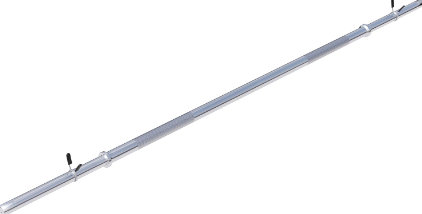
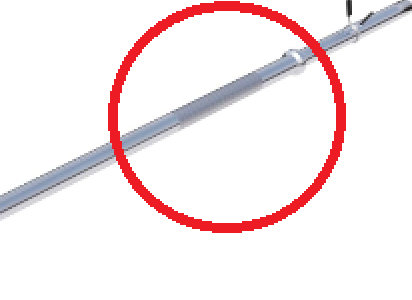
Regarding the bench, the ideal is that it is not too high or too low from the ground. Although the ideal height of the bench will depend on the anatomy and technique of each person. Any standard commercial training bench will do. The most important thing here will be that it has adjustable holders capable of supporting a lot of weight. I suppose you are looking for a cheap bench press , but I assure you that it is worth investing a few more euros in a bench capable of supporting more than 200 kg. You never know how far you'll go in your training! The price difference is not that big, and you will have a sturdy training bench for a lifetime.
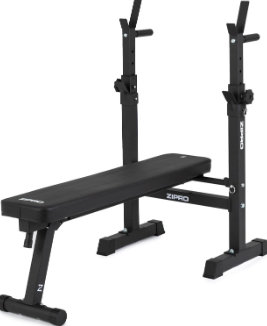
The ideal technique to lift more weight in the bench press
The first and most important point to increase the bench press is technique. Most beginners (and even experienced users) think they are positioning themselves well on the bench, but the truth is that they are not. Simply standing on the bench and grabbing the bench is not enough. If you don't know how to position yourself on the bench correctly, you are losing strength gains and muscle growth. Before putting more weight on the bar, get your technique right.
Grip Width
Start by testing the most suitable grip width for you. This depends on each person, their size and so on. A practical tip that I give you is the following: grab the bar in such a way that, more or less halfway down (when you are lowering), your arms are forming a 90º angle with your forearms vertical. This will be the most efficient arm opening to apply force.
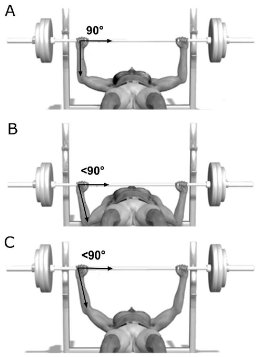
It is true that some experienced lifters open their arms much wider, but this is for competitive reasons. We seek maximum efficiency of the pectoral and triceps because we want to gain both real strength and muscle mass, and placing the arms at 90º is the best way to achieve this. Improving the barbell bench press also depends on other things, such as posture on the bench or balance.
Initial position
Every personal trainer should teach the correct starting position to their client. When your back is on the bench and you grip the bar, before removing the bar from the rack, you have to bring together and squeeze your shoulder blades and bring your shoulders down . With this we manage to lift the rib cage (and the pectoral) to apply greater force with the chest. In addition, our shoulders will be protected during exercise. With this posture, we must achieve a small arch between the lumbar area and the upper part of the back. This is called the lumbar arch and allows us to use more force with our feet and push the pectoral outwards. Don't exaggerate the lumbar arch! If you do it too much, you will only shorten the movement and your muscles will not work at 100% even though you lift more weight.
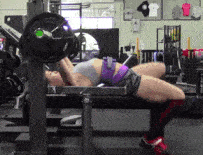
Leg Drive and foot position
Although the bench press is primarily a core exercise, you have to learn to apply force with your legs as well. Trust me, it will make a difference in how much weight you lift right now! If you have correctly applied the lumbar arch, you will be in a better position to use force with your legs.
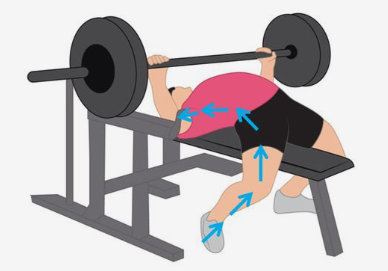
A secret that I use to get a better leg drive is to place my feet back, towards the buttocks, instead of in front of the knees like many people do. Now, I will teach you how to apply force. When you are performing a repetition, you should squeeze your glutes. When the bar touches your chest, you must take a small impulse with your legs and glutes to propel your torso upwards and send the bar flying. With this small boost, you will achieve a much more powerful takeoff for the bar. It is very difficult to do this without taking your glutes off the bench (don't take your glutes off the bench)!
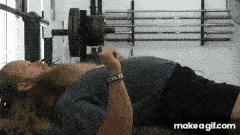
Execution of the movement
When you lift the bar off your chest, never put your shoulders forward! The deltoids should not come off the bench. If you do, you could injure your shoulder and experience discomfort.
Regarding the position of the arms when lowering, a trick for lifting weight in the bench press is to draw the elbows towards the body. Better not to open your elbows outwards when you lower the bar. This will allow you to apply much more force and will also protect your shoulders. Lower the bar to the nipple area of your pectoral; You do not bring the bar towards your neck or abdominals. Remember to touch your chest and push the bar explosively upwards.
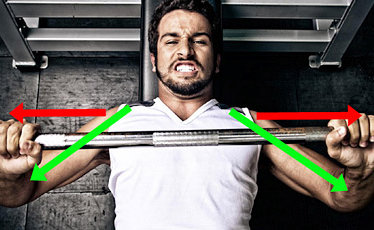
Your feet should be kept planted on the ground and the bar should be held firmly with your wrists straight throughout the entire set. As for breathing, before starting to lower the bar, remember to fill your lungs well with air. The idea is that your ribcage will act as a kind of cushion when the bar hits, which will protect your sternum, shorten the stroke a little, and make you stronger.
How to do exercises to improve bench press
Good! If you already control all the aspects that I have explained to you (grip, lumbar arch, leg drive, breathing...), you have completed the first part of the journey. The next thing is to learn how to organize adequate training to progress.
How to improve bench press? How often to do this exercise? It can be improved by doing the exercise once a week, although the ideal to progress faster is to do the bench press at least twice a week . You should always leave at least 2 days of rest between each session, and it is best not to do other pushing exercises during the rest days.
For example, you can bench press on Monday and Thursday, or Monday and Friday. To progress as quickly as possible, place this exercise as the first in your routine. You must be fully rested to give your best in the set.
I will teach you some routines that will help you increase your muscles and strength. You will discover things you didn't know!
High explosive reps
How to increase bench press repetitions? I will present you the best method there is. Are you tired of suffering from aches and pains training with 3 or 5 repetitions? I can help you increase your maximum strength without having to go to such heavy sets. How to improve bench press strength with high repetitions ?
Don't be afraid to use this method! Although it may seem unconventional and far from everything you had learned, there is nothing like this to increase many kilos in your 1RM! First, I want you to divide your body weight by two. As an example, if you weigh 80 kg (176 lbs), you are going to bench press with half your weight, that is, with 40 kg/88 lbs (in total; the bar and the plates are counted).
You will have to warm up a little and then bench press 40 kilos (88 lbs) to do as many repetitions as you can with this weight (I recommend leaving 1-3 repetitions away from muscle failure). This will be the first set of your training and the most important. We will call it "explosive set" . When you complete it, write down the repetitions achieved in a notebook or mobile phone. For example, 40 kg x 38 repetitions.
In the next bench press workout (at least two days later), you will add 2.5 kg to the bar (1.25 kg or 2.75 lbs per side). Again, the first set of your training will be the explosive set, where you will try to reach the maximum possible repetitions (without failure). Imagine that you manage to do 42.5 kg x 35 repetitions. Write down your result.
In the following week, you will add another 2.5 kg (5.5 lbs) to the bar to do as many reps as you can in your explosive set. Thus, week after week, you will write down all your records achieved with 2.5 kg more. Continue until one day you can only do 15 repetitions with the weight from that session.
For the explosive repetitions method , I recommend training bench presses on Monday and Friday each week. A progression for 9 workouts would be something like this:
- Monday: 40 kg (88 lbs) x 38 reps
- Friday: 42,5 kg (93,7 lbs) x 35 reps
- Monday: 45 kg (99 lbs) x 31 reps
- Friday: 47,5 kg (104,7 lbs) x 27 reps
- Monday: 50 kg (110 lbs) x 21 reps
- Friday: 52,5 kg (115,74 lbs) x 19 reps
- Monday: 55 kg (121,25 lbs) x 17 reps
- Friday: 57,5 kg (126,76 lbs) x 15 reps
- Monday: 60 kg (132,28 lbs) x 14 reps
As you can see, we finished the progression in training with 60 kg because we achieved less than 15 repetitions. Then, you will have to return to the starting weight, which was 40 kg (88 lbs), and you will see that now you can do many more repetitions. You would have to start the progression again by placing 2.5 kg more on the bar in each session. It would be something like this:
- Monday: 40 kg (88 lbs) x 45 reps
- Friday: 42,5 kg (93,7 lbs) x 40 reps
- Monday: 45 kg (99 lbs) x 36 reps
- Friday: 47,5 kg (104,7 lbs) x 32 reps
- Monday: 50 kg (110 lbs) x 30 reps
- Friday: 52,5 kg (115,74 lbs) x 27 reps
- Monday: 55 kg (121,25 lbs) x 23 reps
- Friday: 57,5 kg (126,76 lbs) x 20 reps
- Monday: 60 kg (132,28 lbs) x 19 reps
- Friday: 62,5 kg (137,8 lbs) x 16 reps
- Monday: 65 kg (143,3 lbs) x 16 reps
- Friday: 67,5 (148,8 lbs) x 15 reps
As you can see, in the second cycle of progression , we have broken our previous records and have gone further, up to 67.5 kg, where we have achieved 15 repetitions. What do I do now? Do another explosive cycle!
- Monday: 40 kg (88 lbs) x 47 reps
- Friday: 42,5 kg (93,7 lbs) x 40 reps
- Monday: 45 kg (99 lbs) x 38 reps
- Friday: 47,5 kg (104,7 lbs) x 35 reps
- Monday: 50 kg (110 lbs) x 29 reps
- Friday: 52,5 kg (115,74 lbs) x 30 reps
- Monday: 55 kg (121,25 lbs) x 25 reps
- Friday: 57,5 kg (126,76 lbs) x 24 reps
- Monday: 60 kg (132,28 lbs) x 18 reps
- Friday: 62,5 kg (137,8 lbs) x 19 reps
- Monday: 65 kg (143,3 lbs) x 18 reps
- Friday: 67,5 kg (148,8 lbs) x 16 reps
- Monday: 70 kg (154,32 lbs) x 15 reps
- Friday: 72,5 kg (159,83 lbs) x 15 reps
- Monday: 75 kg (167,55 lbs) x 13 reps
At the end of the third progression, which will have taken you almost two months of training, the final result was 75 kg x 13 repetitions; much further than in the previous cycle.
Note one thing : in some workouts, you could equal or even lose reps from a previous record. It is normal! Don't worry! This happens because we are not always at 100% of our capacity. We have down days and we have to learn to cope with them without breaking down. Continue with the next weight and stop the progression when you reach 15 reps!
You can restart these cycles as many times as you want. When you reach 50 to 60 explosive reps with a weight, you can discard that weight for your next cycle. For example, suppose you can already do 55 repetitions with 40 kg (88 lbs). On your next cycle, you can start the progression with 45 kg (99 lbs).
Can improving in 20, 30, or 50 rep ranges on the bench press increase my maximum strength for 12, 10, 8, 6, or 1 reps? Yes. Your total strength will have increased after several cycles of high reps. However, you will be disadapted to heavy weights, so you will require some adaptation cycles for maximum strength . These are the same as the ones we already explained, but you will start with a load that allows you to perform 12 repetitions. An example would be like this:
- Monday: 75 kg (167,55 lbs) x 13 reps
- Friday: 77,5 kg (170,85 lbs) x 11 reps
- Monday: 80 kg (176,37 lbs) x 8 reps
- Friday: 82,5 kg (182 lbs) x 6 reps
- Monday: 85 kg (187,4 lbs) x 5 reps
When we reach 5 repetitions or less, it will be time to restart the maximum strength cycle and return to the first weight, which is 75 kg in this case. Now we will see how our strength increases with these loads.
- Monday: 75 kg (167,55 lbs) x 16 reps
- Friday: 77,5 kg (170,85 lbs) x 14 reps
- Monday: 80 kg (176,37 lbs) x 10 reps
- Friday: 82,5 kg (182 lbs) x 7 reps
- Monday: 85 kg (187,4 lbs) x 6 reps
- Friday: 87,5 kg (193 lbs) x 4 reps
We finished a second cycle. Again, we restart:
- Monday: 75 kg (167,55 lbs) x 20 reps
- Friday: 77,5 kg (170,85 lbs) x 17 reps
- Monday: 80 kg (176,37 lbs) x 12 reps
- Friday: 82,5 kg (182 lbs) x 9 reps
- Monday: 85 kg (187,4 lbs) x 7 reps
- Friday: 87,5 kg (193 lbs) x 7 reps
- Monday: 90 kg (198,41 lbs) x 6 reps
- Friday: 92,5 kg (204 lbs) x 5 reps
- Monday: 95 kg (209,44 lbs) x 4 reps
You can do as many maximum strength cycles as you want. This is the way to transfer all that explosiveness you gained with high repetitions to your maximum strength. Of course, there will come a time when you will plateau. It is normal! You can try your 1RM, or return to high rep cycles (starting with a weight of 40-50 reps) to surpass your previous records and gain new explosiveness in the bench press .
Did you understand the system? I assure you that I have not seen a better method to improve the bench press . Of course, patience is required and gradually gaining repetitions with the weights. It is a slow but sure methodology with a view to increasing bench strength in the long term. It has been called the Bilbo system or Bilbo method. You have more information about him in the following post:
- Do the reps as quickly and explosively as possible.
- Try not to bounce the bar; Pull the bar out of your chest with muscular strength.
- It is also a bench press workout for beginners.
BOARD PRESS
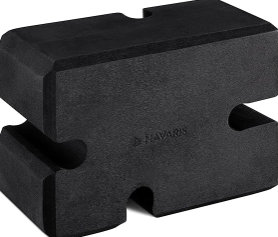
Don't be afraid of half reps! Doing them regularly can improve your full range of motion bench press. It is a way to improve all parts of a repetition. You should know the following
- Triceps problems : When we are not able to complete the repetition from the middle of the upward movement (we cannot lock our arms), this means that we lack strength in our triceps. How to improve? To correct the lack of strength, you have to do partial repetitions in the upper half of the movement, that is, from the elbows at 90º to the extension of the arms. To do this, we can do the bench press with a board or with a cue.
Typically, athletes used wooden boards of different thicknesses to work on the final part of the movement. However, this required the assistance of a training partner to hold the board while the exercise was performed. The board press has benefits for triceps strength and the middle and end of the movement.
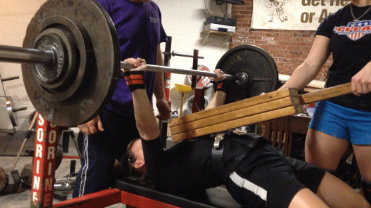
Today, luckily, there are new options like the bench press block , which you can place on the bar. This item will allow you to train the partial bench press at the top of the movement without needing a partner to assist you. In addition, the blocks usually have several slots to insert the bar, which allows you to make progressions with different centimeters of travel. The cue is the best alternative to the classic Board Press .
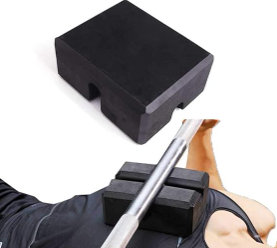
My recommendation is that you use the method of explosive repetitions using this block. Do a few cycles of progressions from time to time and you will unleash all the strength in your triceps. This way you won't have problems locking your arms in maximum strength repetitions.
See the example set at minute 0:45 of the video:
PARTIAL REPETITIONS FROM THE CHEST
This is one of the best ways to gain explosiveness in the pectoral when you have the following problem:
- Lack of chest strength : When this happens to you, it will happen that you will not be able to take the bar off your chest or you will only be able to raise the bar halfway up more or less. From there, you will no longer be able to extend your arms or block them. We are facing a weak pectoral that needs more power. To correct it, the advice is to do partial repetitions from the chest to the middle of the movement (without extending the arms or blocking).
Do not panic! The best bench press lifters train with this method! For example, Larry Wheels, who has an impressive bench press of over 300 kg (661.38 lbs) and always does partial reps.
See the example set at minute 11:35 of the video:
You don't need any equipment to put these partial repetitions into practice. Simply reach halfway through the movement with your elbows at about 90º and go back down to your chest. Of course, do the partials with the explosive high rep method that we explained. You'll improve your bench press with pure pec power!
5 3 1 System
This is one of the most famous routines to gain strength. It is frequency 1 for each basic exercise (bench press, squat, deadlift and military press), but it is very well planned. The routine is made up of 4 days per week; One day will be dedicated to each main exercise. An appropriate distribution would be the following:
Monday (bench press day) - Tuesday (squat day) - Wednesday (rest) - Thursday (deadlift day) - Friday (military press day)
It is a very simple and straight to the point routine. You must follow the repetition scheme indicated for each basic exercise for three weeks. After the third week, the routine is restarted and we start again with week 1:
- Week 1: 3 sets x 5 repetitions.
- Week 2: 3 sets x 3 repetitions.
- Week 3: 3 sets (5, 3 and 1 repetitions).
- Week 4: In the fourth week, we can start again as in the first week (3 x 5) or do a deload (that is, train gently and away from failure to fully recover).
A unique feature of this training is that, in the last set of each exercise, you do not have to do just the indicated repetitions, but do as many repetitions as you can. For example, in the first week, we will end up doing 5 repetitions or more if we can (6, 7...). In the second week, we will end with 3 repetitions or more (4, 6...). In the last week, we will do one repetition or more (2, 3...).
You will have to estimate your 1RM (repetition maximum) for each exercise and use the following percentages of 1RM each week.
| Week 1 | Week 2 | Week 3 |
Set 1: 75 % x 5 reps. Set 2: 80 % x 5 reps. Set 3: 85% x 5 reps. or more | Set 1: 80 % x 3 reps. Set 2: 85 % x 3 reps. Set 3: 90% x 3 reps. or more | Set 1: 75 % x 5 reps. Set 2: 85 % x 3 reps. Set 3: 95% x 1 rep. or more |
The proposed percentages are for the three work sets of each week. Restart the routine as many times as you want to build your strength or until you're at a plateau.
I recommend starting with even a little less than these percentages so that you have more room for improvement (for example, 5 or 10% less than what the table indicates).
When do we recommend the 5 3 1 for bench press? This is an excellent alternative when you have already done several progressions of the explosive high rep routine that we proposed. It will be very good for you to switch to heavier loads and discover all that strength you gained.
This routine is usually accompanied by some accessory exercises to the athlete's taste. For example, dumbbell bench press, rows, pull-ups, leg press, quadriceps extension, chin-ups, etc. You will need accessory hypertrophy work.
CHAIN BENCH PRESS
You can do the routine with a special progression including Powerlifting chains . The chain is widely used in exercises such as the bench press, deadlift or squat. I'll explain how it works. The chain is intended to add progressive difficulty to each repetition. The chain adds extra weight as you raise the bar.
You must place a chain on each end of the bar (both chains of the same weight). During the repetition, as the bar rises, the chains will also rise. At the end of each repetition, you will have lifted more kilos compared to the plates you had placed on the bar. This extra difficulty will be excellent for increasing the weight on the bench press . The idea is that when you stop training with chains, you will be stronger on the conventional bench press.
Crane chains are usually best for bench presses and other exercises as they are very long and heavy. It is worth the investment.
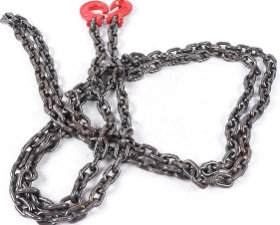
You can purchase Powerlifting chains of different weights to work with different progressions. You can do a 5 3 1 with chains and then without them to see how much you have improved. This accessory is used by top weightlifters around the world.
5 x 5 method
This is the third training that I would like to present to you. It is also a very famous system! How to improve the bench press? Try 5x5 . There are many versions of this training system, but my favorite is Madcow 's . This is recommended for beginners, but really can be done by users of any level.
This is a 3-day routine designed to train on Monday, Wednesday and Friday. The frequency of the bench press is twice a week . Additionally, on Wednesdays the military press is done, the other important pushing exercise. Basically, the training consists of a medium intensity day (Monday), a light day (Wednesday) and a heavy weight day (Friday). The base is 5 sets x 5 or 5 sets x 4 , increasing the weight a little in each set. Let's look at the programming:
| Monday | Wednesday | Friday |
Squat: 5 x 5 Bench press: 5 x 5 Barbell Row: 5 x 5 | Squat: 4 x 5 Military press: 4 x 5 Deadlift: 4 x 5 | Squat: 4 x 5, 1 x 3, 1 x 8 Bench press: 4 x 5, 1 x 3, 1 x 8 Barbell Row: 4 x 5, 1 x 3, 1 x 8 |
The weights to use are calculated by percentages of the 1RM of each exercise. The ideal is to use an automatic calculator that exists on the internet for this routine.
Download 5x5 calculator in English and Spanish.
Doing it "by eye" will be more complicated, but not impossible. I will try to explain to you a way:
- For the squat : The most important set on Monday will be the last of the 5 (note this weight). On Wednesday, make sure to use less weight than you used on Monday. On Wednesday, the last two sets will be done with the same weight (which will be lower than the weight of the fourth and fifth sets on Monday). Finally, on Friday you will have to focus on the set of 3 repetitions; Do it with 2.5 kg (5.5 lbs) more compared to the last set on Monday. Finally, Friday's set of 8 reps will be done with the same weight you used in the last two sets on Wednesday.
Let's look at the example:
- Monday: 72.5 kg x 5, 85 kg x 5, 95 kg x 5, 107.5 kg x 5, 120 kg x 5 (last set on Monday)
- Wednesday: 72.5 kg x 5, 85 kg x 5, 95 kg x 5, 95 kg x 5 (the last two with the same weight)
- Friday: 72.5 kg x 5, 85 kg x 5, 95 kg x 5, 107.5 kg x 5, 122.5 kg x 3 (2.5 kg/5.5 lbs more than last set on Monday ), 95 kg x 8 (the weight of the last two sets on Wednesday)
- For the bench press : We will follow the same procedure as for the squat, but there will be no training on Wednesday. Friday's set of 3 repetitions will be done with 2.5 kg (5.5 lbs) more than the last set on Monday.
Example:
- Monday: 52.5 kg x 5, 62.5 kg x 5, 70 kg x 5, 80 kg x 5, 87.5 kg x 5 (last set on Monday)
- Friday: 52.5 kg x 5, 62.5 kg x 5, 70 kg x 5, 80 kg x 5, 90 kg x 3 (2.5 kg/5.5 lbs more than the last set on Monday), 80 kg x 8 (we remove weight in this set)
- For the barbell row : Exactly the same as the bench press.
Example:
- Monday: 52.5 kg x 5, 62.5 kg x 5, 70 kg x 5, 80 kg x 5, 87.5 kg x 5 (last set on Monday)
- Friday: 52.5 kg x 5, 62.5 kg x 5, 70 kg x 5, 80 kg x 5, 90 kg x 3 (2.5 kg/5.5 lbs more than the last set on Monday), 80 kg x 8 (we remove weight in this set)
- For the military press : We will look at the last set. In the following week, we will gain 2.5 kg more in the last set compared to the previous week.
- For the deadlift : We will look at the last set. In the following week, we will gain 2.5 kg more in the last set compared to the previous week.
We can do up to 8 weeks of this routine. When we're done, we can restart it with the new estimated 1RM and do it again. Remember to do the last set of each exercise 2.5 kg (5.5 lbs) more than the previous week.
Madcow's 5 x 5 is great because it offers us:
- Squat frequency 3.
- Bench press frequency 2.
- Deadlift frequency 1.
- Military press frequency 1.
You can complement this routine with some auxiliary exercises such as biceps curls, pull-ups, sit-ups, leg extensions...
Are you interested?:
PIN PRESS
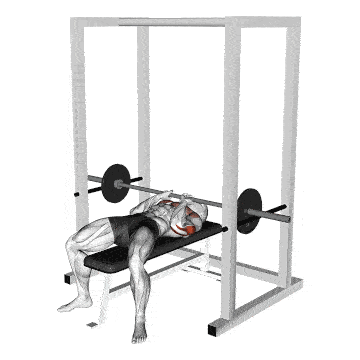
This is another variant that I would like to explain to you. How to improve the bench press with Pin Press? In this case, you will definitely need a power rack with safety holders. The idea is to place the safety bars above your chest and put the bench press bar above.
You will have to release the bar from the safety holders on each repetition. You can put the holders at different heights. Completely stop the bar each time you return it to the racks and before doing the next rep. This exercise will improve your triceps strength and help you with that final push to extend your arms. The Pin Press is not as well known and is not even an essential exercise, but it has helped many people build strength in the bench press.
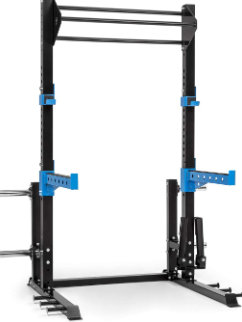
Other auxiliary exercises to improve bench press
The first thing to increase strength and weight in this exercise is to learn the correct body position and technique. Next, you must design a well-structured routine with enough days of rest. Any of the three that we have proposed can work. In addition, you have learned some variations to improve the initial, middle and final part of the movement, such as the board bench press , partial repetitions and the Pin Press . If you already understood all this, you just need to gain muscle mass in the muscle groups involved in a bench press.
Now, you are going to see the exercises to improve the bench press that I recommend. These are auxiliary exercises and you should include several in your routine depending on your weak points. Some are variants of the bench press, while others are focused on strengthening the shoulders or triceps. Remember to leave rest days after a pushing workout session. How to improve my bench press with more exercises ?
Pause bench press
It is an advanced variation that you can do to work on the initial part of the movement. Pause briefly for 1 or 2 seconds down each time the bar touches your chest. You will achieve a better takeoff.
Larsen press
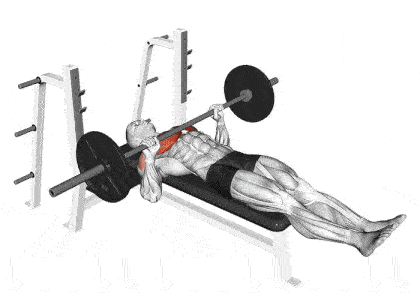
This modality aims to complicate the conventional bench press exercise. It's like a normal bench press, but you will have to keep your legs straight and not touch the floor with your feet. In this variation, the support of the feet and the leg drive are lost, so you will push only with the strength of your torso. Of course, you will have to use less weight than in conventional exercise, but it will help you improve overall.
Another alternative is to place your feet on the bench.
Close Grip Bench Press
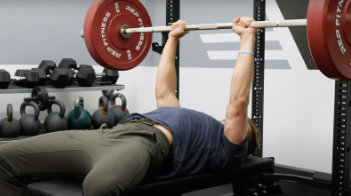
The difference from the normal bench press is that here you will grip the bar according to the width of your shoulders. The grip will be somewhat narrower compared to the conventional bench press (where the arms are spread a little wider than shoulder width). Therefore, this exercise requires more strength from the triceps. It is an excellent variation for you if you have problems with your triceps.
Dumbbell bench press
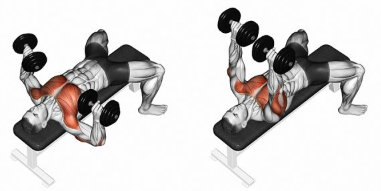
Adding auxiliary work with dumbbells will help you correct strength imbalances between the left and right sides of the body. The dumbbell bench press will help you add more pounds to the bar as well.
Dips on parallel bars
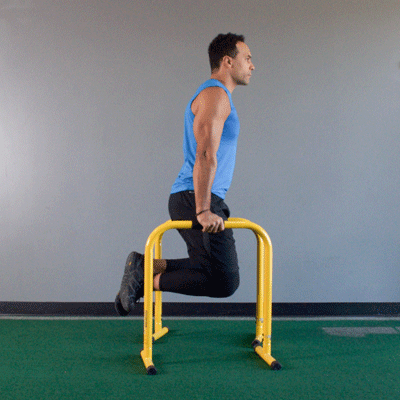
This is one of the best and most underrated exercises. How to improve the bench press without doing the bench press directly? Do parallel dips. Have you seen the cases of calisthenic athletes who have achieved powerful 1RM in the bench press without having done this exercise before? This is because they do a lot of weighted dips, which have a brutal transfer of force to the bench press. In fact, your bench press is usually 75% of your total dip strength (counting your body weight and added weight).
To improve in chest dips, you can use the method of explosive repetitions . Add 2.5 kg (5.5 lbs) of weight in each workout and increase the repetitions with each weight.
Military press
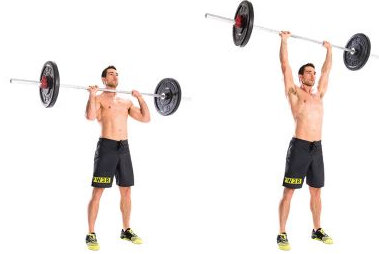
It's time for auxiliary shoulder work. And believe me when I tell you that you need these types of exercises! The military press will help you have strong shoulders and prevent unwanted injuries to the deltoid. In general, any shoulder press exercise will serve as support for your bench press.
Glute bridge on the floor
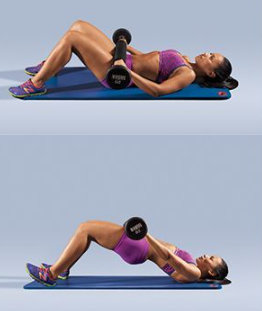
This simple exercise has good force transfer to the bench press. You just have to lie face up with your heels on the floor and raise your hips. This gives strength to the hips and gluteus, which improves the leg drive and lumbar arch in the bench press. Another similar exercise is the Hip-Thrust .
Are you interested?:
Pendlay row
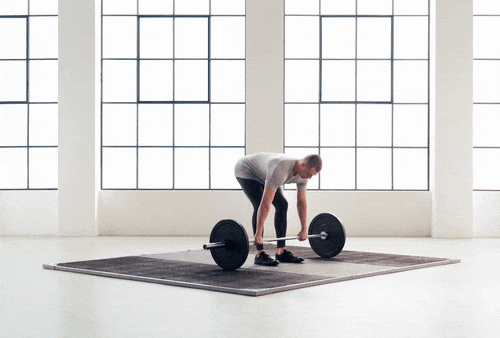
This movement, also known as straight-back row or 90º rowing, is the antagonist exercise of the bench press. The ideal is to have a good balance of strength between the Pendlay row and the bench press. If you look closely, it's the opposite movement (in this case, you pull the bar towards you, instead of pushing it).
In general, any back exercise will help you improve your bench press. These exercises can be deadlifts, pull-ups or pulldowns. You need to build a very strong back to have complete stability on the bench. You already know! Train your back with several basic exercises to improve bench press!
French press
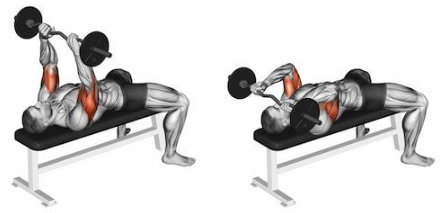
The French press (or skull crusher) is the best thing you can do for your triceps. Lie on a flat bench with an EZ bar and lower the bar to your forehead, then push it up and finish with your arms extended. Build powerful triceps to improve your press. Apply explosive high reps to the French press! You can also adjust the exercise bench with inclines.
Are you interested?:
Gain weight to increase your bench press!
My final advice to you is to increase your body weight . One reality that you will understand the more you train is that the bigger and heavier your body is, the more weight you will move on the bench press. This is one of the most body weight-dependent exercises.
Gaining 8 to 10 kilos (between 17 and 22 pounds) is the best way to prepare your body to lift heavier loads. Yes, even if it means "erasing" your abs a little. This is a sacrifice you must make if you really want to increase your strength. Ideally, most of the weight you gain will be muscle, but even fat can make you lift more weight. Body fat shortens the motion, promotes inertia and protects the joints. You don't need to become a fat man either! But you must specify your priorities: if your goal is to gain strength in the bench press, you should not try to maintain defined muscles. You have to focus on your objective. You will have time to diet to define your muscles later. And believe me! If you gained weight and strength in the bench press, you will look more spectacular when you decide to define your body. It's okay to go up to 20% body fat (no more than this) to increase strength.
Are you interested?:
Equipment
Finally, accessories such as elbow pads or wrist guards will also help you. In fact, they are the only accessories I recommend (not elastic bands or bench press shirts or anything else). Elbow pads or wrist guards are not going to alter your real strength at all, so use them without fear. In addition, these products will help you reduce the risk of injury. Remember that an important part of improving is going far in training without getting injured. You don't gain strength while you can't go to the gym because you have to recover from an injury, so it's best to prevent it.


Do you already know how to improve the bench press for competitive examinations or to gain muscle mass? There are no more secrets than the ones you have seen here. Use good technique and learn to use the leg drive. Then, use different well-planned strength routines with different repetition ranges. Here I have explained three workouts that you can alternate. Use techniques for all parts of the movement such as partial repetitions. Choose the right accessories, such as the block, chains or wristbands. Finally, it includes a repertoire of assistance exercises to hypertrophy the chest, shoulders, triceps and back. My last piece of advice is to arm yourself with patience, because increasing the kilos in this exercise requires years of training. Try to gain body weight little by little to achieve it faster. Share this bench press guide with your friends if you found it interesting! Thank you!



![LAS MEJORES MÁQUINAS DE MUSCULACIÓN PARA PRINCIPIANTES [GUÍA 2025]](/modules//smartblog/images/no-home-small.jpg)
![HOW TO BUILD A HOME GYM ON A BUDGET [2024 GUIDE]](/modules//smartblog/images/296-home-small.jpg)


